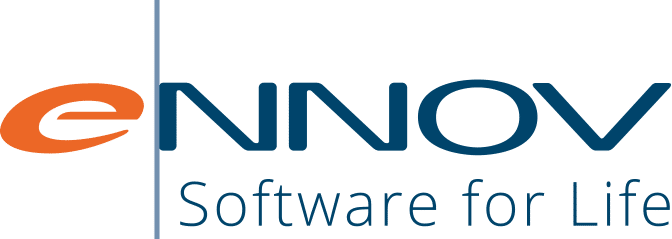Managing essential documentation for clinical trials has become quite complex in today’s clinical research environment. Study sponsors are required to implement a quality system to ensure regulatory compliance of data and documentation and ensure availability of study documentation throughout the trial and for years after the study is completed. With this increased complexity of clinical trials today, larger volumes of documentation are being captured across multiple departments within the Sponsor and CRO organizations.
While most organizations have moved to an Electronic Trial Master File (eTMF) system to help with the centralization and management of clinical trial documentation, some are still utilizing paper TMFs or file server based document repositories. Organizations are challenged to reduce the costs and time associated with maintaining documentation for clinical studies, while still ensuring complete regulatory compliance.
There are many eTMF systems available in the market today. To help you better understand what system is right for you, we have compiled a list of the top 5 features to look for when evaluating eTMF systems.
* Pre-defined TMF Reference Model – While there are no specific regulations that require a Sponsor or CRO to utilize any certain documentation structure or naming conventions for documentation, the DIA TMF Reference Model has become an unofficial industry standard as a starting point for an eTMF. This model aims to standardize taxonomy and metadata and outline eTMF content using standard nomenclature. An eTMF system should come pre-loaded with the DIA TMF Reference Model to be used as a starting point for your clinical studies. Additionally, the eTMF system should allow the user to define and create their own internal reference model. Whether utilizing the DIA TMF Reference Model or your own customized TMF Reference Model, an eTMF system should also allow for specific customizations to the model from study to study. Sponsors might have their own custom TMF reference model, or use one based on therapeutic area or trial phase, and an eTMF system should be flexible enough to support the use of multiple models.
* Full Document Management System (including Electronic Signature) – Many use an eTMF system solely for the purpose of organizing and storing applicable documentation for a clinical study. While this is definitely a benefit over a paper-based TMF, one of the most powerful features of an eTMF system is the complete document management capability. This covers the full document life cycle from document creation, including co-authoring, to document reviews, approvals and validation, an on to document distribution, versioning and eventual archival. The eTMF system should have full electronic signature capabilities while ensuring appropriate 21 CRF Part 11 compliance. The ability to create, approve, distribute and fully track documentation within an eTMF system, and with a customizable document work flow is a key feature that will help realize many efficiencies with your eTMF, while remaining compliant.
* Powerful Search Capabilities (with Metadata) – It has been estimated that 80% of eTMF users spend 30 minutes per day searching for study documentation and that 60% spend an hour per day duplicating content already produced by others. This is an inefficient way for clinical team members to spend their days. An eTMF system should have power full text search functionality, including the ability to search extensive metadata. An effective eTMF system will allow users to define and store an unlimited amount of metadata for each document and allow that metadata to be utilized when conducting a document search. Metadata would include things such as the document title, version, type, date, as well as document issuer, authors, proofreaders, approvers and receivers. It also includes other identifiers such as program, study, country, site, investigator, TMF filing and any other custom metadata defined for the document. Additionally, when searching, the eTMF system should be fully capable of searching for text within the document itself or within attachments to the document itself.
* Multiple Methods of Adding Documents – An eTMF system must support multiple methods of adding documents into the system. This might mean creating a document from scratch, including routing for review, approvals and document distribution, and it might mean supporting the uploading of documents created and managed outside of the eTMF system. Users should have the ability to upload documents one by one, or in bulk, allowing the addition of many documents at the same time. The interface should allow for the drag and drop of these documents into the system. Once uploaded into the eTMF, the user should be able to easily “file” the added documents to the correct location in the TMF reference model and add any defined metadata as required.
* Easy System Administration – The last of our top 5 features for any eTMF system is easy system administration. The eTMF system should allow you, the user, to fully manage and administer your eTMF environment. This means you should have full control over all system functionality and configurations without having to go back to the technology provider for system administration tasks. This would cover everything from user access, to system permissions and user roles, as well as customizing system workflows and defining your TMF reference models in the system. You should be in full control of your eTMF environment, and able to make updates and changes as required, all without having to pay the eTMF technology provider for common system administration functions and wait for them to be implemented.
There are other key features and functionality that should be included with any eTMF solution, such as the ability to define a checklist of expected documentation, track required/missing documents, completely customize all document and system workflows, provide helpful dashboards and reports, provide a user-friendly and intuitive interface, as well as many others, but we hope that you will find this list of 5 key eTMF features beneficial as you search for an eTMF system.
Ennov eTMF is a full-featured eTMF solution, built on Ennov Doc, our comprehensive document management software. We would love to talk to you more about your eTMF use and provide a full system demonstration of Ennov eTMF. Contact us to find out more, or to schedule a live demonstration of Ennov eTMF.


